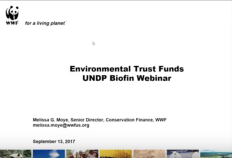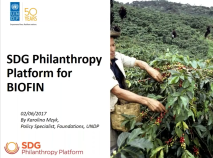
The Environmental Finance Political and Institutional Review (PIR) with focus on biodiversity and climate change adaptation was prepared by the Kyrgyzstan BIOFIN national team based on a participatory approach engaging ministries, agencies, stakeholders from academia, private sector, non-governmental organizations, development partners and independent experts.
The PIR focuses on the analysis of the current policy, economic, fiscal and institutional frameworks in environment, biodiversity and adaptation to climate change spheres. It includes a review of national strategy and policies, highlights sectoral linkages identifies driving forces of biodiversity changes, analyses impact of current financial frameworks on biodiversity and adaptation to climate change and describes institutions involvement. The PIR report consists of 7 chapters and includes key recommendations, applications, infographics and links.
The Kyrgyz Republic has been active in mainstreaming sustainable development and required steps of transition into the country’s main strategic documents, which determine the agenda of national development in accordance with international obligations in achieving the Sustainable Development Goals. These documents laid the foundation for incorporating the environment into the monitoring and evaluation system of the socio-economic development of Kyrgyzstan.
Despite that the environment protection has been identified as a key national priority there is still a negative trend in natural resources management leading to natural resources depletion, environmental pollution, and loss of biological diversity in the Kyrgyz Republic. These factors undermine the capacity of ecosystem services to be functional and be restored. The pricing mechanism for the use of natural resources in the country does not take into account negative externalities, thus does not put economic restrictions on the excessive use of natural resources.
The publication proposes keys recommendations for decision makers to improve policy and sectoral development frameworks including strengthening institutional capacities and, budget planning and implementation processes. Some examples of these recommendations are the following:
- Mainstreaming and implementation of sustainable uses of natural resources and environment protection principles into national strategic documents related to economic growth to reduce biodiversity degradation and losses.
- The ministries or agencies with environmental expenditures should adopt of result-based budgeting approach and align environmental expenditures with identified sustainable development priorities to ensure an increase of budget allocation and improve budget implementation efficiency.
- Reforming or greening of potentially negative subsidies to reduce burden on the national budget. Most of subsidies were introduced to support low-income population; however, currently everyone can benefit from them. Potentially negative (harmful) subsidies for biodiversity must be reformed. Firstly, it is necessary to conduct a comprehensive assessment of their actual social effectiveness. This assessment will foster the plan for subsidies’ reform - “greening” with minimal disadvantage for vulnerable groups of the population who depend on these subsidies. The reform of subsidies will allow, on the one hand, to save and mobilize resources, on the other hand, to reduce their impact on the environment with benefits for future budget.



